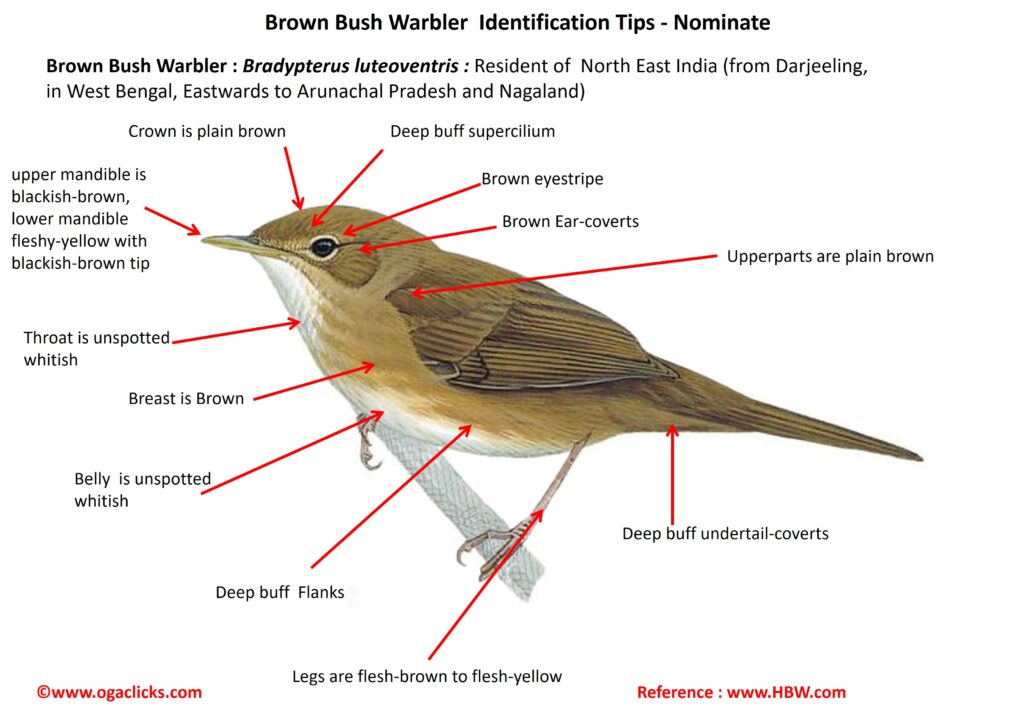
Brown Bush Warbler Bradypterus luteoventris
Etymology:
- Bradypterus : Greek word bradus –slow, sluggish; pteros--winged
- Luteoventris : Latin word luteus- saffron-yellow ; ventris –belly
Vernacular Names : Cachar : Daotisha-tchik
Distribution : Resident of North East India (from Darjeeling, in West Bengal, Eastwards to Arunachal Pradesh and Nagaland)
Description : It has a size of 13–14·5 cm; wt. of 10 g. It is a medium-sized unmarked dull brown bush-warbler, lacking rufous or olive tones in plumage, and with rather slight bill. It has plain brown crown, ear-coverts, nape, breast and entire upperparts, including wings and tail. It has deep buff supercilium, malar region, flanks and undertail-coverts. The throat and breast centre are unspotted whitish, central belly is similar; in worn plumage becomes whiter on underparts. The iris is dark brown; upper mandible is blackish-brown, lower mandible is fleshy-yellow with blackish-brown tip. The legs are flesh-brown to flesh-yellow. Both the sexes are similar. The juvenile is darker brown above than adult, somewhat tinged with yellowish on underparts, may have some weak mottling on throat.
Habitat: It is found on slopes with forest clearings and at margins of cultivation where shrubby thickets and tangles of tall grasses, bamboos, brambles (Rubus) and willows (Salix) flourish, between 2000 m and 3300 m. Descends to lower elevations in winter.
Food habits: It eats Insects and their larvae.
Breeding habits: They breed in Apr–Jul. The nest is built by both sexes. The nest is a deep cup of woven grass leaves, sometimes domed, lined with finer stems, hidden in dense tuft of grass. They lay a clutch of 3–5 eggs. The incubation is done by both sexes, mostly by female. The incubation period is 12–13 days